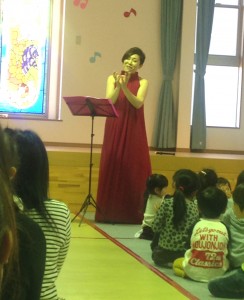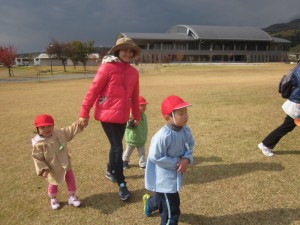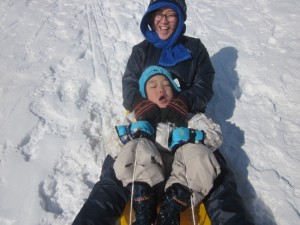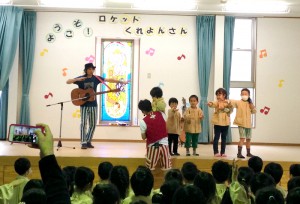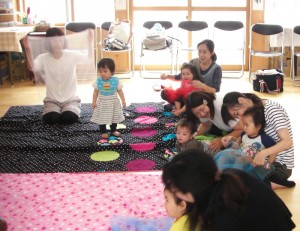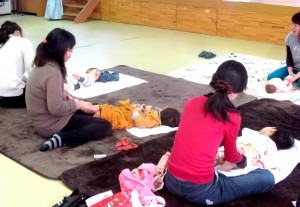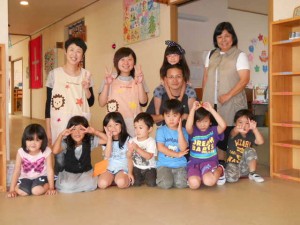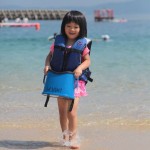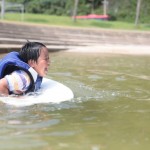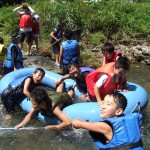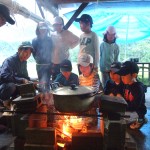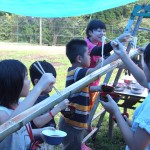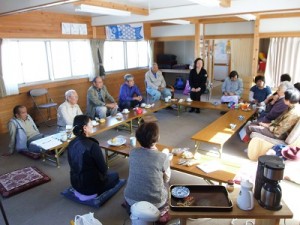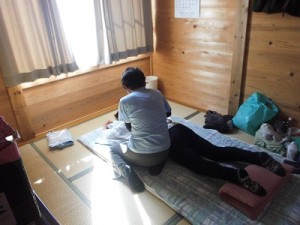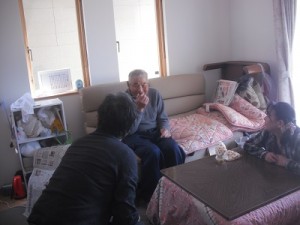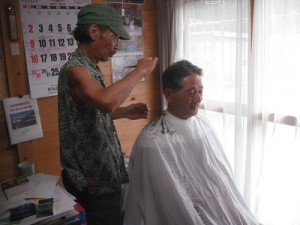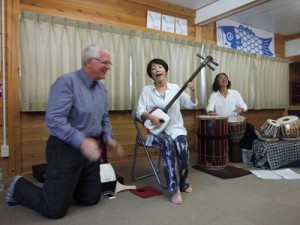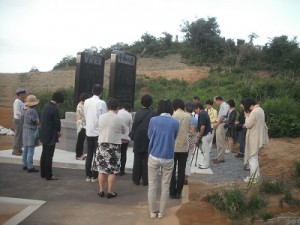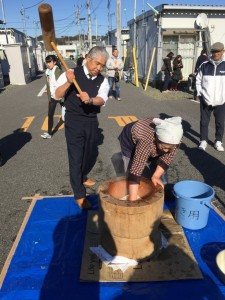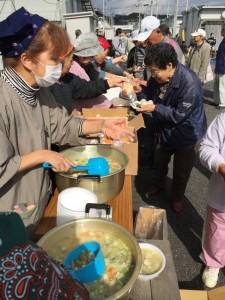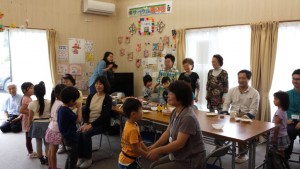【いのちを守るために ~原発のない世界を求めて~】
この表題のもと、原発問題プロジェクトの委員長である司祭 相澤牧人師が、2016年7月に横浜聖アンデレ教会を会場に講演されました。
講演の案内チラシには「「私たちは何よりも、神さまによって与えられた”いのち”の問題として、信仰者の視点で、このことを考えていかなければならないと思います」とあり、また、講演の冒頭には、「キリスト者として、人間として生きるためには、関心を寄せていかなければならない大切なテーマであると思います」と述べておられます。
相澤司祭は、この講演を一部省略してまとめられました。
大変分かり易く、また大切な示唆に富むこの講演を、是非多くの方と分かち合いたいと思い、ホーム・ページにその全文を掲載いたします。
1,はじめに
2,教会はいのちのことを考える
3,原子力発電システムの問題
4,原子力事故は戦争とのみ比較できる
5,神のことを思わず人間のことを思う
6,大飯原発運転差し止め請求事件判決
7,私たちの視点
いのちを守るために
~原発のない世界を求めて~
司祭 相 澤 牧 人
「いのちを守るために、原発のない世界を求めて」、このテーマは重いものです。そして重要なものです。
私は原子力発電のことを科学的に、技術的に知る者ではありません。それは門外漢です。
しかしキリスト者として、人間として生きるためには、これは関心を寄せていかなければならない大切なテーマであると思います。
原子力発電というシステムを、今、私たちはどのように考え、理解していけばよいのでしょうか。
すべての人に神様から平等に与えられているものが三つあります。
命と時間と死です。
この三つのものは、まさに平等に与えられています。
多い少ないはありません。これは荘厳な事実です。この事実を心に留めて、その中の「いのち」に焦点を当て、原発問題を考えていきたいと思います。
すべての人に神様は一つのいのちを与えて下さった。故に私たちは生きています。
正確に表現するなら、生かされているということです。
そしてそれが、一つしか与えられていないということは、いかに大切なものであるかということを想像することが出来るでしょう。なくしたなら終わってしまうのです。代わりのものはないのです。
そして、別の視点から考える時、その大切ないのちを破壊することは許されないのだと思います。
その行為に関しては「否」ということでしょう。
いのちを破壊するものは、戦争であり、誹謗中傷であり、無視することであり、共に生きることを否定することがあげられます。
その他にもまだまだあると思います。
そして、2011年3月11日にもう一つのことに気づかされたのです。
福島第一原子力発電所の事故によって、危険な放射性物質がまき散らされました。この出来事によって私たちの生活様式と思考が根本的に変化してしまったと言われています。
創世記第2章16節・17節に「主なる神は人に命じて言われた。園のすべての木から取って食べなさい。ただし、善悪の知識の木からは、決して食べてはならない。食べると必ず死んでしまう。」と記されています。
意味深い神の命令です。
私たちは、食べてはいけないものがある、ということを知ることです。
つまり、私たちにはしてはいけないことがあるということです。
このことを再度思い起こしたいものです。そして、
原子力発電を考える時、この神の命令は、私たちの立ち位置を教え示してくれているのではないでしょうか。
「食べると死んでしまう」ということが、今、起きているのではないでしょうか。
ところで、教会で政治的なことはちょっと、と言って扱わない、避けるということはありませんでしょうか。
皆様の教会ではいかがでしょうか。
このような考えを持つ教役者、信徒の方がおられることを承知しています。
しかし、はたしてそうなのでしょうか。
カトリックの司教協議会の常任司教委員会が2016年4月7日付で出された声明は、そのことに関して明確に答えています。
私たちも耳を傾けることではないかと思います。
その一部を記します。
なぜ司教団が政治的な発言をするのかという批判や、政教分離の精神に反するのではないかという指摘があります。
これらについては、昨年のメッセージの最初の段落で、「教会は人間のいのちと尊厳に関する問題に沈黙できない」と述べました。
カトリック教会は、特定の政治的立場に立つものではありません。
ただ、司教団には、最近の日本の政治の流れが、将来わたしたちの生活の場で「人間のいのちと尊厳に関する問題」となる危険をはらんでいることに、信仰者として注視する必要があることを表明する務めがあるのです。
「政教分離」とは「政治と宗教の分離」ではなく、「国家と教団の分離」を意味しています。
特定の宗教団体が国家と権力支配・被支配の関係に入ることを禁じ、宗教団体が国家権力を行使したり権力と癒着したり、便宜の提供を受けたりしてはならない、といっているのです。
この思いを私たちは持ち続けたいものです。
そして、教会では政治のことは、との批判に対してはこのように応答されてはいかがでしょうか。
政党のことを言うのではなく政治のこと、つまり、いのちのこと、生活のことに関して、その尊厳に関することに関しては黙っておられないということです。
原子力発電の問題点は、生命にとって極めて危険な放射性物質(いわゆる「死の灰」)を必然的に作り出してしまうことにあるのです。
原子力技術開発の初期には、放射性廃棄物を無毒化できるという期待がありましたが、現在では、技術的困難や費用対効果ゆえに、その見込みはほぼなくなったと言ってよい、と言われます。
放射性廃棄物の処理あるいは保管問題は、脱原発を実現しても残り続ける重大な問題です。
放射性廃棄物の半減期は数万年から数百万年とされます(プルトニウム239で2.41万年、ネプツニウム237で214万年)。
数万年から数百万年という時間は私たちが想像もできないほど長い時間です。
これほど長期間にわたって、極めて危険な放射性廃棄物を安全に保管できるかどうかは疑問です。
とりわけ、日本は地震多発地帯に位置しており、放射性廃棄物を地中に埋めて数万年にわたって安全に保管することは、ほぼ不可能でしょう。
また、これほど長い期間にわたって、発電による直接の恩恵を受けない未来世代へと極度に危険な放射性廃棄物を押し付けることは、倫理的な観点からも許されることではない(脱原発の哲学 59頁)、のではないでしょうか。
ウラン鉱の放射能半減期は45億年
使用済み核燃料の毒性は10万年間の隔離が必要
人類はどれくらい前に誕生したか。ホモと名付けられたのが180万年前、ホモ・サピエンスは20万年前。
原子力発電とは、それを稼働させればさせるほど大量の放射性廃棄物を発生させます。
それは、長期的な管理を必要とするものです。
このシステムにおいては、今を生きる私たちの電力消費のために、原発を維持し続けたその分だけ処分不可能な放射性廃棄物が増大し、その管理とそれに起因する大きな危険性が未来世代へ押し付けられることになるのです。
今を生きる私たちの幸福が、未来世代の犠牲の上に成立している、という構造であることを知ることです。
そしてもう一つ、原子力発電技術は原子爆弾製造の技術でもあるということです。
いわゆる使用済み燃料棒を再処理し、原子爆弾の原料として使用できるプルトニウムを生産することが出来るのです。
核分裂をゆっくりさせれば原発、一瞬のうちにさせれば原爆です。
原子力発電を稼働しつづけることの理由の一つに、この原爆をつくる技術を持ち続けるということがあるからだと言われています。
原子力発電を核発電と表現する人もいます。
そして、しっかりと見極めていなければならないことは、必ず危険な廃棄物が作られるということです。
ここで日本聖公会の「戦争責任告白」と共に考えたいと思います。
この告白によって、日本聖公会は、「神の民として正義を行うことへと召されていることを自覚し、平和の器として、世界の分裂と痛み、叫びと苦しみの声を聞き取ることの出来る教会へと変えられることを祈り求めます。」と決意しているのです。
戦争はしない、平和を構築し、平和に生きる、ということでしょう。
その観点から原子力発電を見てみると、原子力事故は戦争とのみ比較可能であるということです。
他とは比較できないほど過酷なものということです。
「脱原発の哲学」という本を読んで教えられました。
つまり、原発や原子力施設で原子力(核)事故が起これば、広大な土地が居住不可能となり、数万人規模の人々が死の危険にさらされる。
その意味で、戦争とのみ比較可能である、というのです。例えば
<チェルノブイリ原発事故>
①死者数
チェルノブイリ・フォーラムは、チェルノブイ原発事故の被害を受けた3か国(ベラルーシ、ロシア、ウクライナ)のうち比較的被曝量の多い60万人を対象として、ガン死者数を4,000人としている。
グリーンピースは全世界を対象にガン死者を93,080人としている。
ニューヨーク科学学会は、がん以外も含めた死者数を985,000人としている。
②移住
土壌汚染によって1万平方キロメートルの地域から40万人が移住を強いられた。
③経済的損失
ベラルーシにもたらされた損失は、国家予算の32年分。
これらは一つの事故としては桁外れに大きく、戦争とのみ比較しうる規模である。<福島第一原発事故>
①避難
福島県の約15.4万人が他の土地への避難(2013年3月時点)。戦争・内戦による難民出現に酷似。
②居住不可能・管理区域
原発周辺の約1,000平方キロメートルの居住不可能地域。14,000平方キロメートルの放射線管理区域。事故が原因でここまで広大な土地が居住不可能になることはない。あるとすれば戦争によってのみ。
原子力(核)事故は、ガンなどによって人を死に至らしめ、広大な土地を居住不可能にし、そこで暮らしていた人々の生活を根こそぎ奪う点において、戦争とのみ比較可能なものであるのです。
戦争をしない、憲法9条を持つ日本の生きる方向、そして、日本聖公会が戦争責任告白を決議したという意味を考える時、その答えを改めて気づかせてくれるのではないでしょうか。
さて、原子力発電が稼働された後には放射性廃棄物が発生します。
3・11以後、多くの人はここに注目することになりました。(専門家は承知していますが)
2012年、日本聖公会は第59(定期)総会で「原発のない世界を求めて―原子力発電に対する日本聖公会の立場―」を決議しました。
その骨子は、
「神によって造られたいのちを脅かす」
「神によって創造された自然を破壊する」
「神によって与えられた平和な暮らしを奪う」
として、
「原発のない世界を求めて」いきましょうとしています。
処理技術もないまま大量に生み出された放射性廃棄物は、長期にわたって人々のいのちにとって脅威となるということ。
長い時間を経て安定した状態にされた放射性物質を発掘し、自然生態系を破壊しているということ。
今回の事故によって生活基盤が崩壊し、不安定な生活を余儀なくされたということ。
これらを指摘しています。
ここでイエス様のみ言葉に耳を傾けたいと思います。
「サタン、引き下がれ。あなたは神のことを思わず、人間のことを思っている。」(マルコ福音書8章33節)
これはイエス様がペトロに向かって言われた叱責です。
この叱責の意味することは、人間のことを思ってはいけないというのではなく、忘れてはならない順序があるということに気づくようにということではないでしょうか。
神のことを思わず、人間のことを思う、経済優先はいのちを貴ぶか、原発事故から考えさせられることを思い巡らしたいと思います。
忘れてはならない順序とは、いのちを大切にするということを第一に置くということです。
この思想は、ほとんどの人の共通項でしょう。
しかし、「神の存在を全く考えていないか、たとえ神を信じていても、人間は怒りやねたみ、独占欲や支配欲に突き動かされたり、金銭や物に心を奪われてそのとりこになったりする時、神を忘れ、理性を失い、他の人のいのちさえ奪ってしまうことがあります。神なしだと人間は、権力、体力、知能、所有物などの点で自分より劣っていると思う人に対して、そのいのちを自分より軽く見る傾向がある」(社会司教委員会「非暴力による平和への道」13頁より)と言われています。
「神のことを思わず、人間のことを思っている」というイエス様の言葉を現代の状況の中で考えると、「いのちのことを思わず、経済のことを思っている」と言い換えることが出来るのではないかと思えてきます。
理論経済学者と言われる宇沢弘文(ひろふみ)さんは、人が生きる土台となる大気や水、森林、土壌などを市場原理にゆだねるべきではない、と発言しておられたと聞きました。
それは、生活の糧の海を大企業の利益のため汚され、健康と命を「換金」させられた水俣の人びとや、国策による開発で先祖伝来の地を「換金」させられた人々がいるということ、また今もそのようなことが行われようとしていることへの警鐘となっているのではないでしょうか。
人が生きる土台となるものを市場原理に委ねてはならない、と言われます。大切な視点を私たち与えてくれているのだと思います。
哲学者の梅原猛氏はある講演で、「草木国土悉皆成仏(そうもくこくどしっかいじょうぶつ)」という思想を語られました。
この考え方は、動物はもちろん、草木(そうもく)すなわち植物や、国土すなわち鉱物にも仏性が存在し、成仏可能であるということです。
つまりこれは、自然と共生する生き方を示しているものだということです。
今回の福島原発事故から、明らかになったことを通して、人間は、科学技術文明を「草木国土悉皆成仏」という立場、すなわち自然との共生という立場で考え直さなければならないのではないか、と問いかけられました。
イエス様が言われた永遠の命を生きることを私たちが実践するとき、この自然との共生ということをも加味しなければならないのではないかと思います。
創世記の天地創造物語が教えることは、まさに自然との共生であり、自然を治めることです。
支配するのではなく、治めるのです。
神が造られたものを、その本来の姿を発揮して行くことが出来るように治めることが、人間に与えられている任務であるということを忘れてはなりません。
核燃料から生じる危険な廃棄物を安全な処理方法が見出せない現実ひとつとっても、原発を稼動し続けることは宗教的、倫理的に許されることではありません。
それをしようとするのは、経済が優先である、利益が優先である、という思いからなのではないでしょうか。
人のいのちよりも経済成長を優先するのではなく、神のことを思い、人のことを思う、いのちを貴ぶ社会を作り上げていくことに力を発揮していくことが、私たちの生きる道なのでしょう。
そのことを思う時、2014年5月21日に、福井地裁の大飯原発3,4号機の運転差し止め請求事件の判決は、学ぶものが多いのではないかと思います。
殊に、国富の損失ということに関しては聖書の理解と同じではないかと思います。
【国富の損失】
被告(関西電力)は本件原発の稼動が電力供給の安定性、コストの低減につながると主張するが、当裁判所は、極めて多数の人の生存そのものに関わる権利と電気代の高い低いの問題等とを並べて論じるような議論に加わったり、その議論の当否を判断すること自体、法的には許されないことであると考えている。
我が国における原子力発電への依存率等に照らすと、本件原発の稼動停止によって電力供給が停止し、これに伴って人の生命、身体が危険にさらされるという因果の流れはこれを考慮する必要のない状況であるといえる。
被告の主張においても、本件原発の稼動停止による不都合は電力供給の安定性、コストの問題にとどまっている。
このコストの問題に関連して国富の流出や喪失の議論があるが、たとえ本件原発の運転停止によって多額の貿易赤字が出るとしても、これを国富の流出や喪失というべきではなく、豊かな国土とそこに国民が根を下ろして生活していることが国富であり、これを取り戻すことができなくなることが国富の喪失であると当裁判所は考えている。
また、被告は、原子力発電所の稼動がC02(二酸化炭素)排出削減に資するもので環境面で優れている旨主張するが、原子力発電所でひとたび深刻事故が起こった場合の環境汚染はすきまじいものであって、福島原発事故は我が国始まって以来最大の公害、環境汚染であることに照らすと、環境問題を原子力発電所の運転継続の根拠とすることは甚だしい筋違いである。
朝日新聞の天声人語に面白いことが書いてありました。
ある男が美しい妻と仲睦まじく幸福に暮らしていたが、犬に脅かされて妻が狐の正体をあらわす。
だまされたと知って男は驚くが、だまされていた時の幸福を忘れられず、もう一度化けてくれと頼む、という説話があるそうだ。これを原発に置き換えて考えてみるのだ、と。
「福島の事故で安全神話のまじないは解け、正体が露わになった。それなのに昔が忘れられず、もう一度化けてくれと頼みこむ。」
文芸評論家の斎藤美奈子さんという方が、原発をなぜ止められないのか。
その理由を分析されました。
・やっと再稼働にこぎつけたのにそう簡単に止められるかという意地。
・ここで止めたら二度と再稼働できなくなるという不安。
・危機を乗り切れば日本の原発の安全性が立証できるという期待。
・停止を求める声に屈したら負けだという面子。
・停止に伴うリスクを負いたくないという自己保身。
意地、不安、期待、面子、自己保身、もしこれが本当のことであったなら、たまったものではありません。
でもなんだかそうなのではないかと思えるような気がしてきます。
メルケル首相は2011年4月に「安全なエネルギー供給のための倫理委員会」を設置しました。
2011年5月30日に倫理委員会は、「10年以内に原子力エネルギーから撤退できる」とする報告書を提出した。要点は、
①原発の安全性が高くても、事故は起こり得る。
②いったん原発事故が起きると、他のどんなエネルギー源よりも危険である。
③次世代に廃棄物処理などを残すことは倫理的に問題がある。
④原子力より安全なエネルギー源が存在する。
⑤地球温暖化問題もあるので、化石燃料を代替として使うことは解決策にはならない。
⑥再生可能エネルギー普及とエネルギー効率化政策で、原発を段階的にゼロにしていくことは、将来の経済のためにも大きなチャンスとなる。
「決断」だろうと思います。原発を無くすと決断すれば、それに対してさらに研究し、知恵を出し合い、方策を見出していくのです。それは再生可能エネルギーの普及に前進します。小さな技術が様々に開発されているようです。
原子力発電に関してのキーワードは何か、それは「安全」ということだと思います。
しかしその安全とは何かということが重要です。
技術的に安全、科学的に安全、といわれますが、惑わされます。私は放射性廃棄物を無害化する技術が出来た時、安全が整うのだと言えるのではないかと思っています。
しかし、それは無理だということです。
坂村という2006年に97歳で逝去された仏教詩人がおりますが、その方が「あとから来る者のために」と言う詩を書かれました。
あとからくる者のために
あとからくる者のために
苦労するのだ
我慢するのだ
田を耕し
種を用意しておくのだあとからくる者のために
山を 川を 海を
きれいにしておくのだああ あとからくる者のために
みんなそれぞれの力を傾けるのだあとからあとから続いてくる
あの可愛い者たちのために
未来を受け継ぐ者たちのために
みなそれぞれ自分でできる何かをしてゆくのだ
~坂村真民(しんみん) 「詩集・詩国」より~
最後に、5月6日に東京都江東区夢の島の第五福竜丸展示館前でおこなわれた2014年原水爆禁止国民平和大行進<東京一広島コース>出発集会の中で、福島県いわき市から東京に避難している11歳児童の訴えが参加者の胸を打ちました。
全文を紹介します。
ぼくは、原発事故の次の日に、福島を離れてから、一度も自分の家を見ていません。2年生の3月に、急にぼくは東京の子になりました。家も学校も友達も、楽しかった事が急にみんな消えて、ひなん所から知らない学校へ行く生活が始まりました。
弟も、ぼくも、泣いたり吐いたりしながら、ただ、しなければならないことをがんばりました。
ぼくたちは、※くいきがいひなんだから、ばいしょう金がほとんどもらえないので、みんなたいがい貧乏です。そして、ほとんどの子が、お父さんと離れ離れの生活をしています。お父さん達が福島で働かないと、ぼくたちは避難を続けられないからです。原発事故さえなければ、ぼくらはみんな、自分の家で、家族そろって普通に暮らせたはずです。ぼくも、1年半はお父さんと離れ離れでした。たまにお父さんに会える日はすごく嬉しかったけど、お父さんが帰るたびに、弟が布団にもぐって泣くので、すごくつらかったです。ぼくも弟と同じ気持ちだったから。
ぼくのお父さんは、一人で福島の家に残ってがんばったけど、心と体が壊れて、仕事を辞めて東京へ来ました。やっと一緒に暮らせるようになったけど、今でもいろいろ大変なことがあります。
広島や長崎の原爆のことは、話には聞いたけれど、まさか69年もたって、自分の家の上にも同じ様なものが降ってくるなんて、そして、その見えない毒が、ぼくたちの生活をめちゃくちゃにしてしまうなんて、夢にも思わなかったです。
ぼくたちは、原発事故でたくさんのものを失いました。自分の家や家族の笑顔や、たくさんの楽しい事が、みんな消えてしまいました。
こんなことを二度と繰り返してほしくないから、どうかぼく達が政治を動かせる日まで、この国を守っていてください。そしてぼくたちに、原爆も原発も無い、安全な未来を渡してください。ぼくたちは、それを引き継げるように、一生懸命勉強してついていきます。 よろしくお願いします。
以上
※くいきがいひなん(区域外避難):原発事故後、国からの避難指示 によって避難した人たちには賠償金が支給されたが、自主避難した人たち(区域外避難の人たち)には支給されていない。


